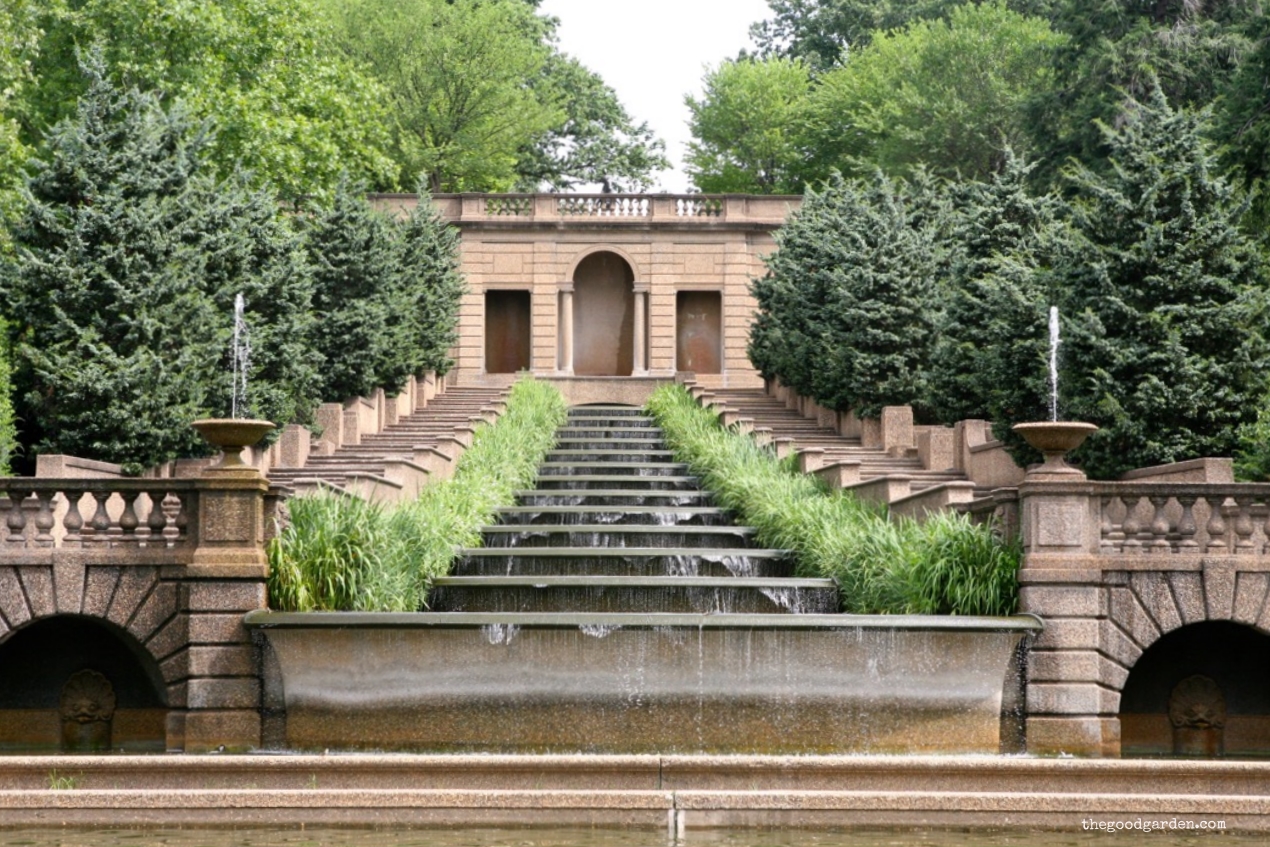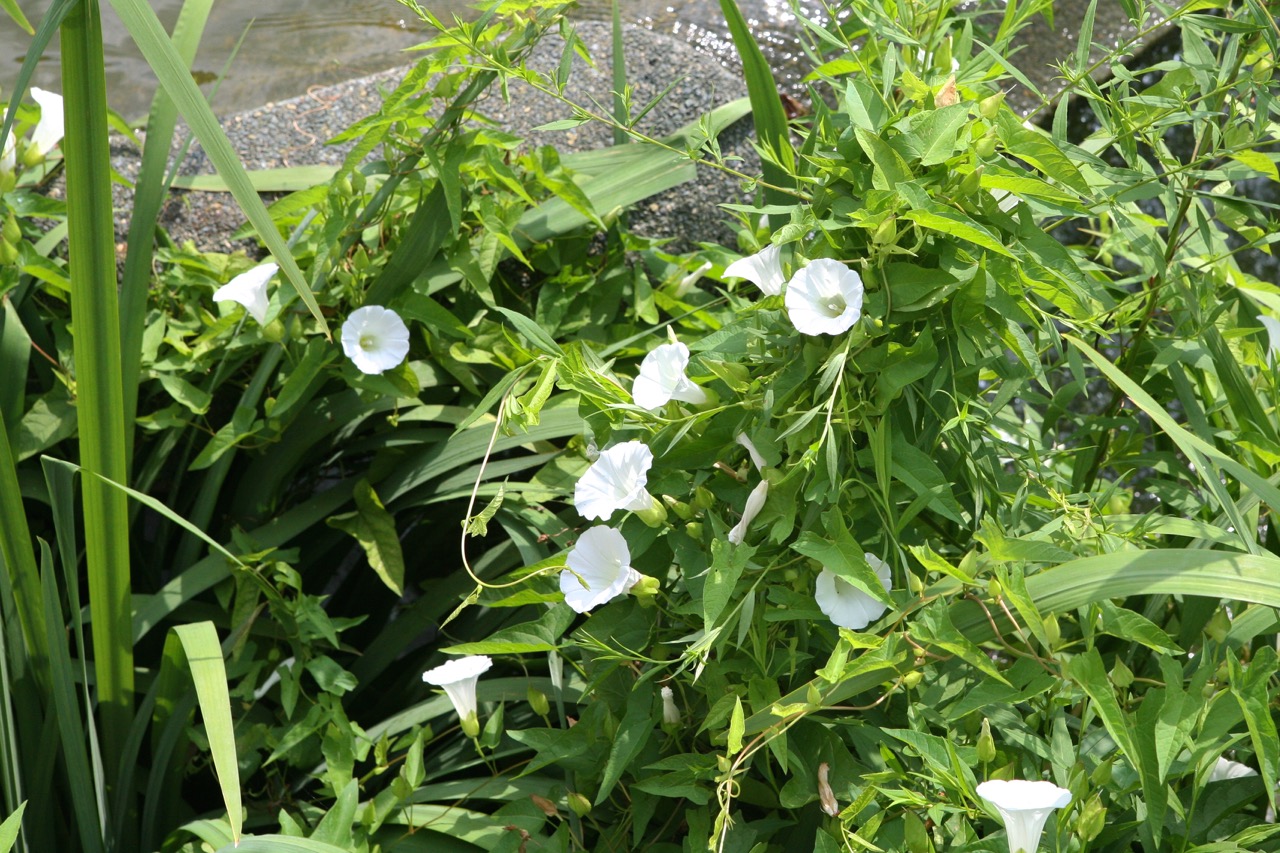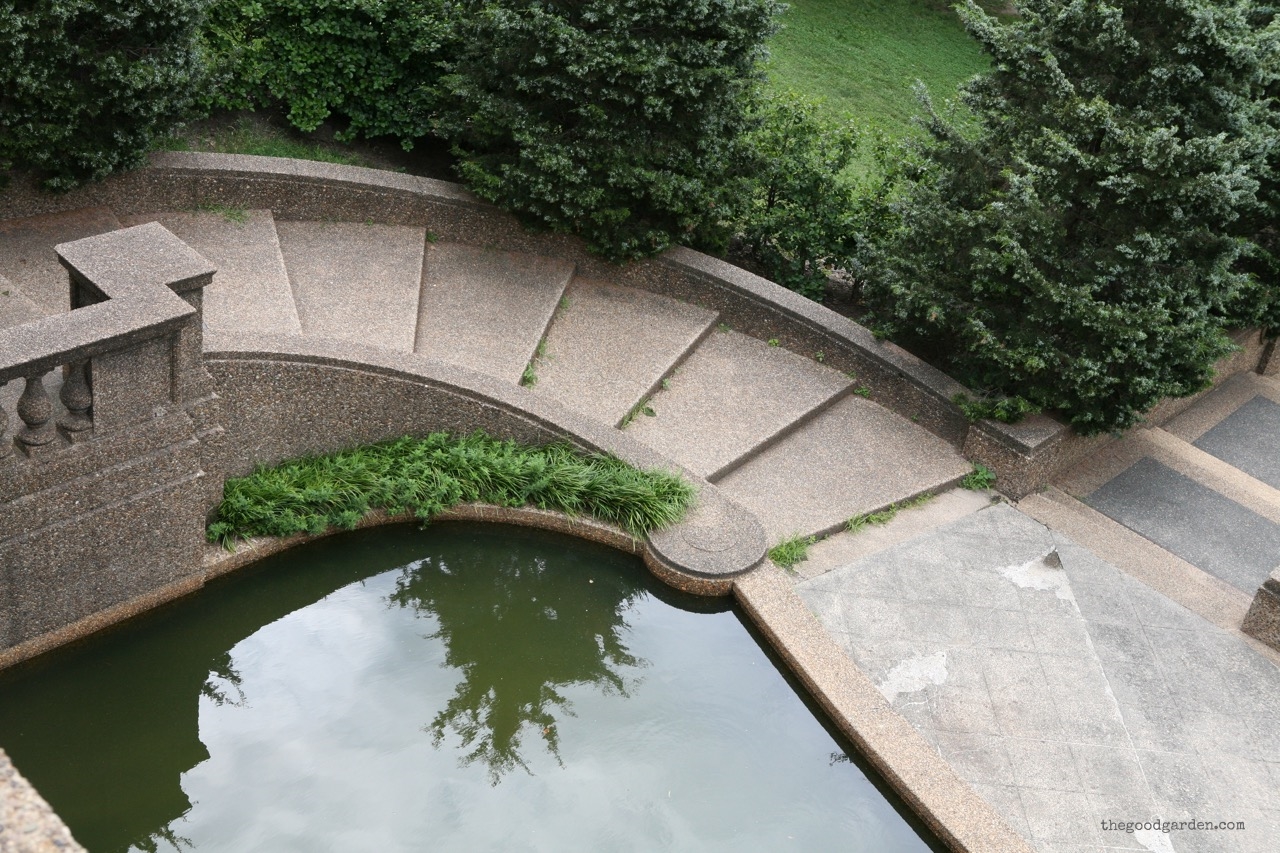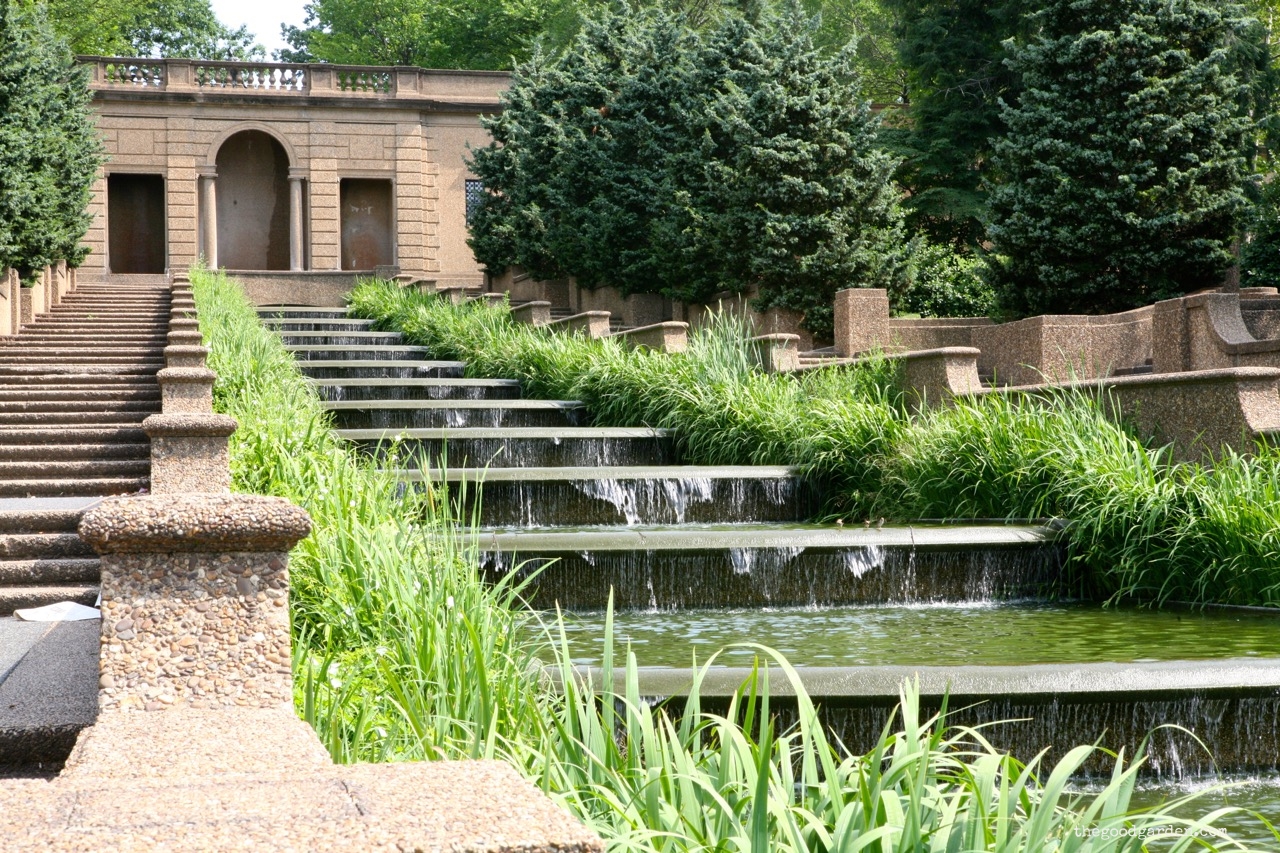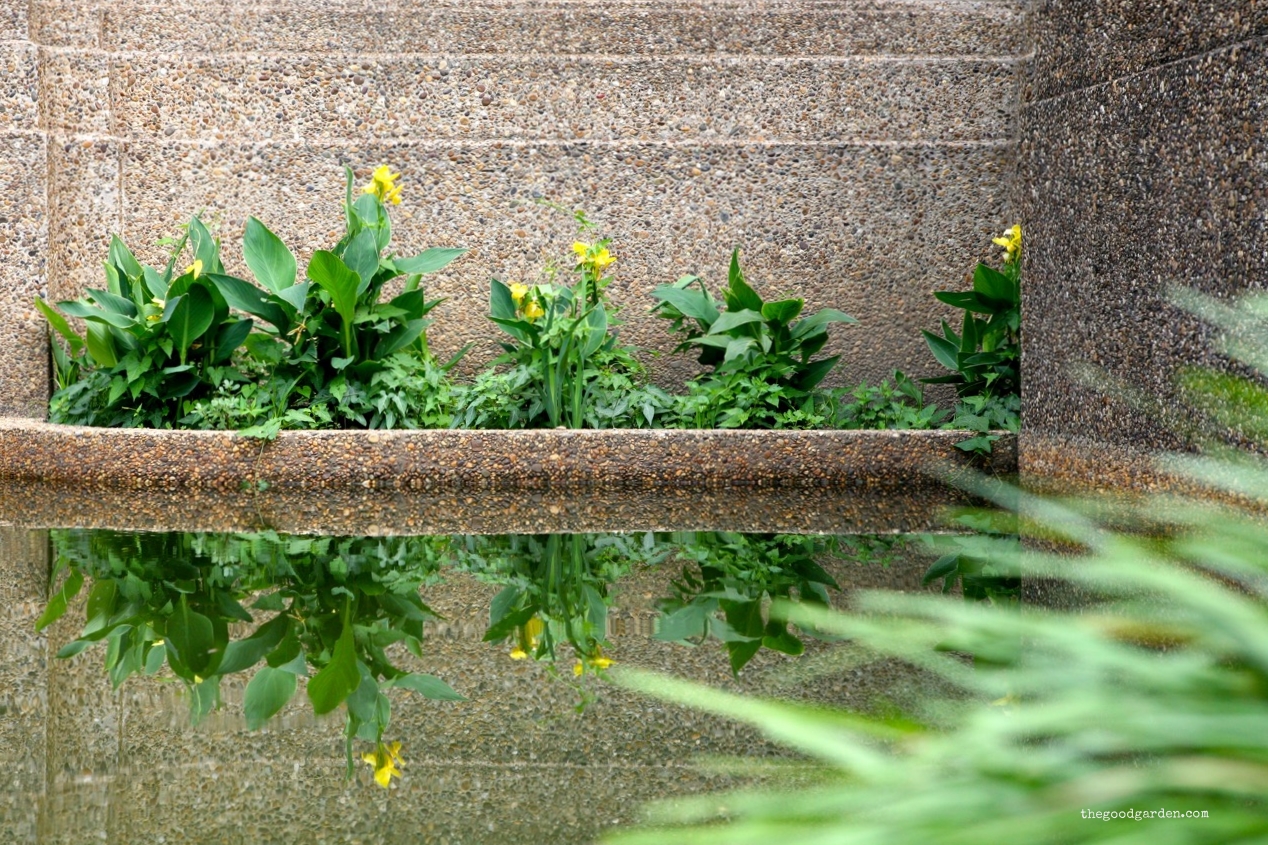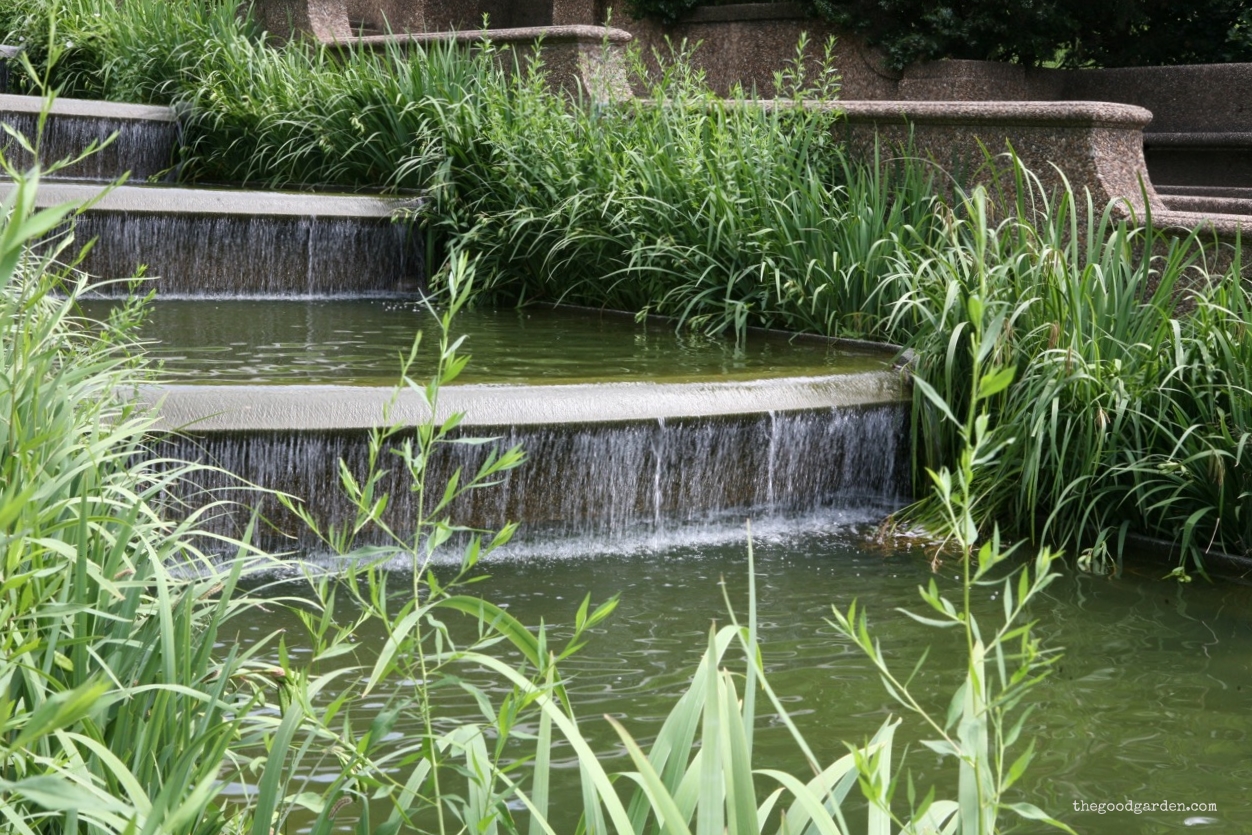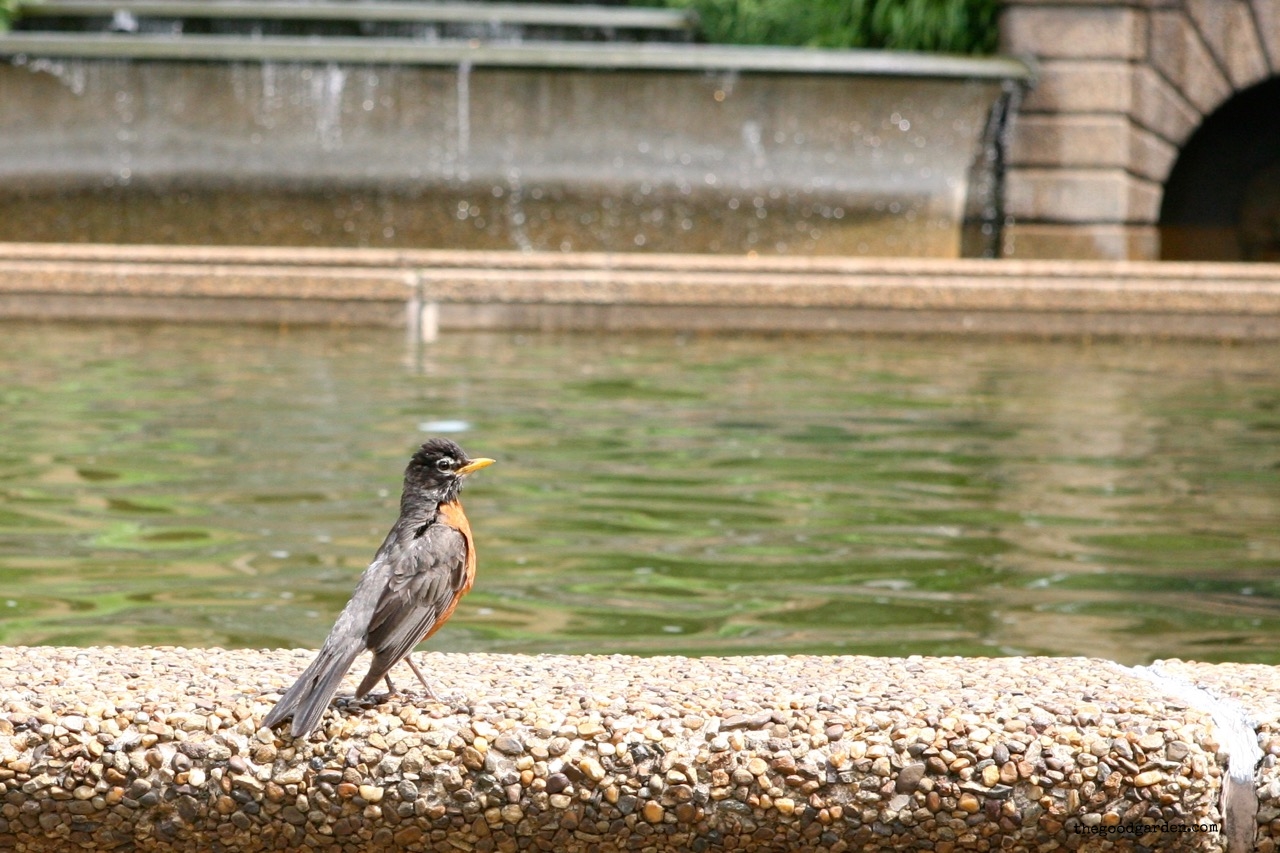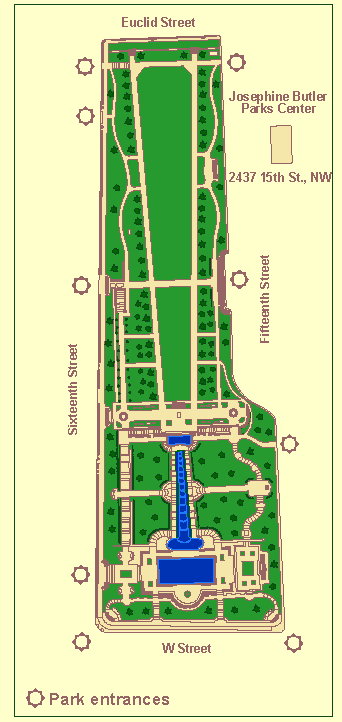On my recent trip to Washington DC, Meridian Hill answered this question. This Italian renaissance garden sits right in the heart of the Columbia Heights-Adams Morgan neighborhoods surrounded by Beaux Arts mansions and elegant apartment buildings. Now a National Historic Landmark, “the creation of a Renaissance villa landscape in the midst of an American city… has no true parallel."
The garden is well known to local residents but as a visitor from out of town, I wouldn’t have thought to venture in. This garden doesn’t open up to the street the way a city park usually does. A perimeter of tall plantings, retaining walls, and fencing separates the busy world outside from the quiet space within. I find this inviting in a private garden, but I must admit that-- in a city that I don’t know well-- I found the barriers unwelcoming.
Fortunately I had just read about this garden in The Cultural Landscape Foundation’s “What’s Out There” guide for DC—which inspired me to visit.
The garden has several distinct sections: there is a grass mall set on a cliff with views of the city, a memorial garden to President Buchanan (the only one in the city), and a quiet avenue of linden trees. Key elements are set on an axis; geometry and symmetry govern the design. Wonderful side paths and garden spaces connect the sections and soften the incline of the property. Benches offer places to relax.
My favorite element was the dramatic cascade. A multi-tier waterfall takes advantage of the 75-foot drop from the top of the hill to the street below. In this section, the planting scheme ranges from the intentional to the serendipitous. Cannas and boxwood join morning glories and grasses that have worked their way into some of the planters. Though I could imagine the garden with more formal plantings, I just loved this touch of abandon: the look of nature left to its own devices that complements structure so well.
Creating the park was the personal passion of 'urban planner' Mary Henderson. She envisioned an area full of embassies and missions and started to lobby Congress in the 1890s to create the park as an iconic entrance to the city.
George Burnap and Horace Peaslee, from the Office of Public Buildings and Grounds, created the first designs in 1914. In 1918, landscape designer Ferruccio Vitale joined the team to develop the planting plan and simplified the design that we see today.
As in every garden, budget constraints meant trade-offs. The designers had hoped for natural stone, but its cost was prohibitive. With so much hardscape required, the designers turned to local artisan, John Earley. Early developed a technique that used economical cast concrete embedded with aggregate, a material he would become famous for.
Today, the park hosts a drumming circle during the summer. Started in 1965 to celebrate the life of Malcolm X after his assassination, the tradition continues every Sunday. The park is sometimes called Malcolm X Park. I think that Mary Henderson would be thrilled to see how comfortably old-world style can host the needs of modern culture.
Thanks to The Cultural Landscape Foundation’s “What’s out there” garden guide, it is now easier than ever to find a good garden to visit. The guides have it all: a short history of the garden, information on the people who created it, the reasons why the garden is important, and where to find it.
Vacation season is upon us; whether you stay close to home or travel far, I hope you will have the chance to visit a good garden “out there.”
See more Italian renaissance gardens here.

